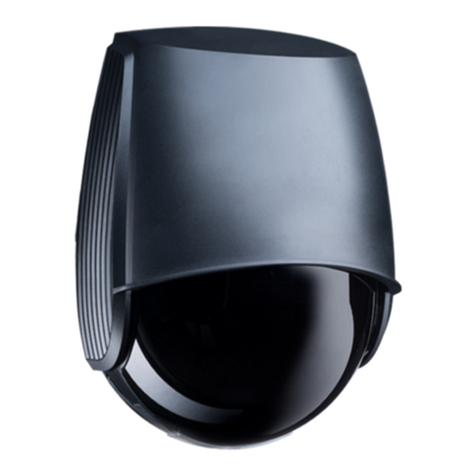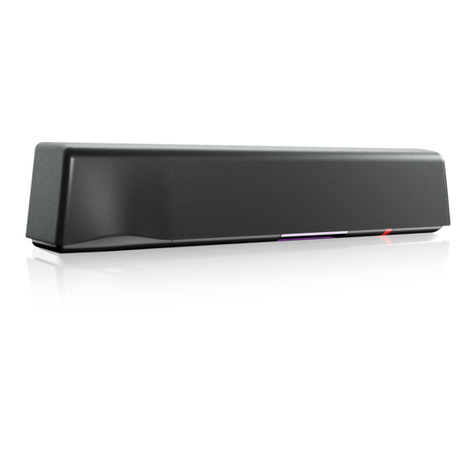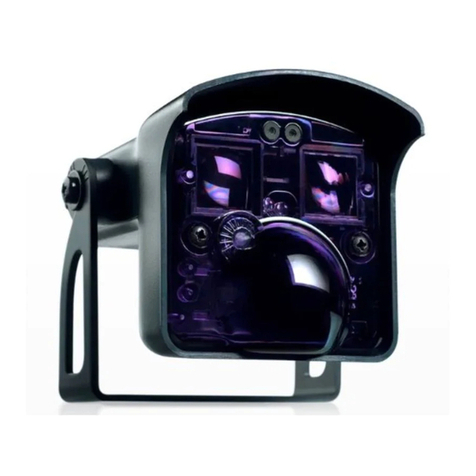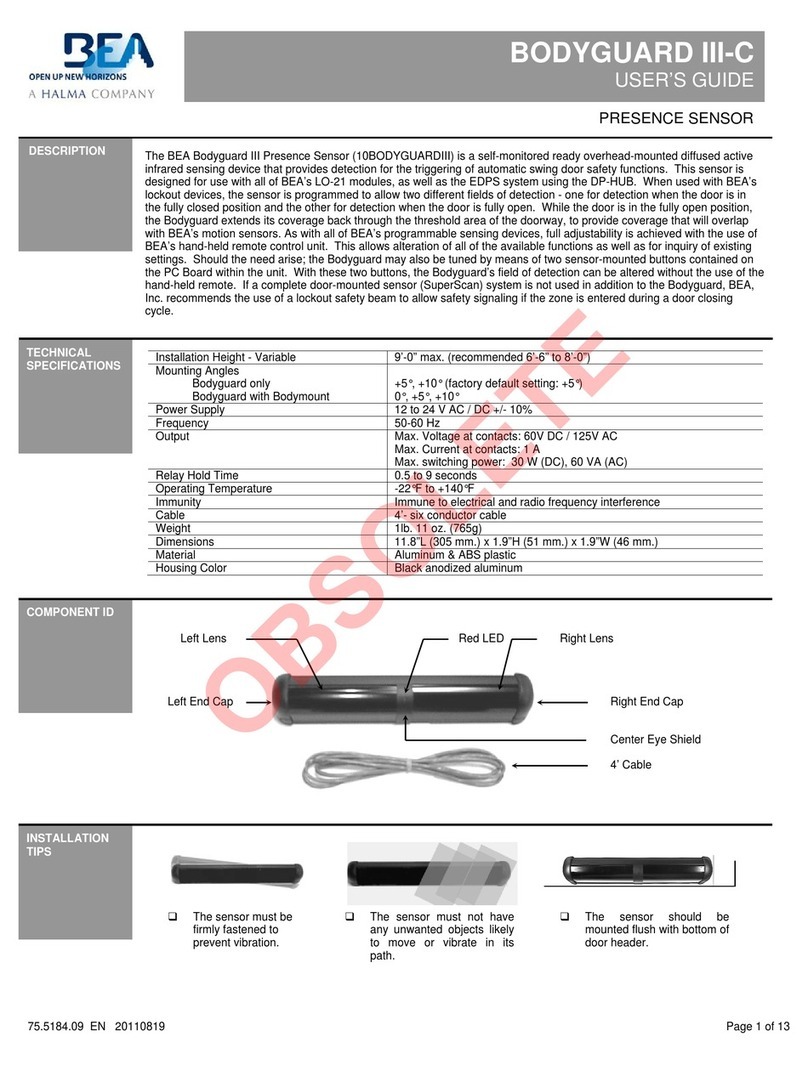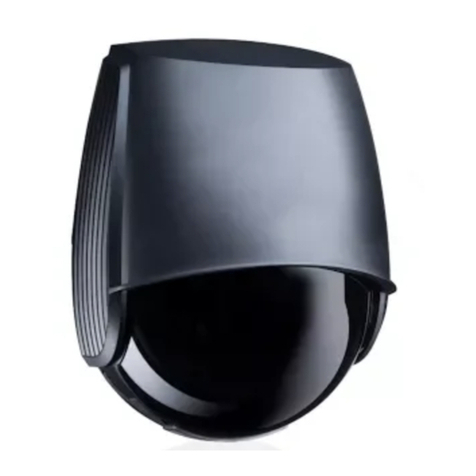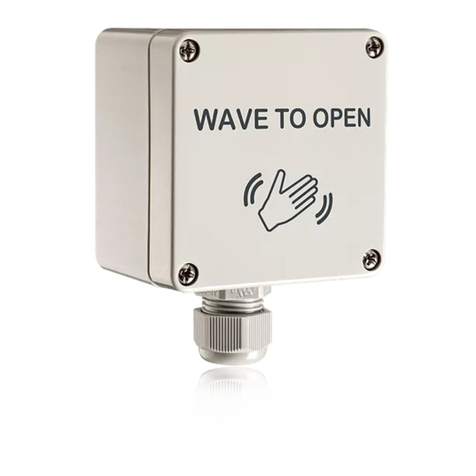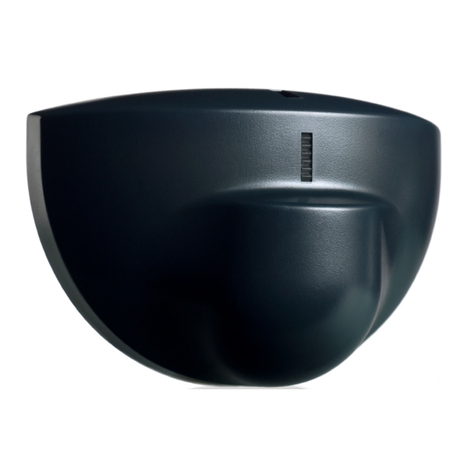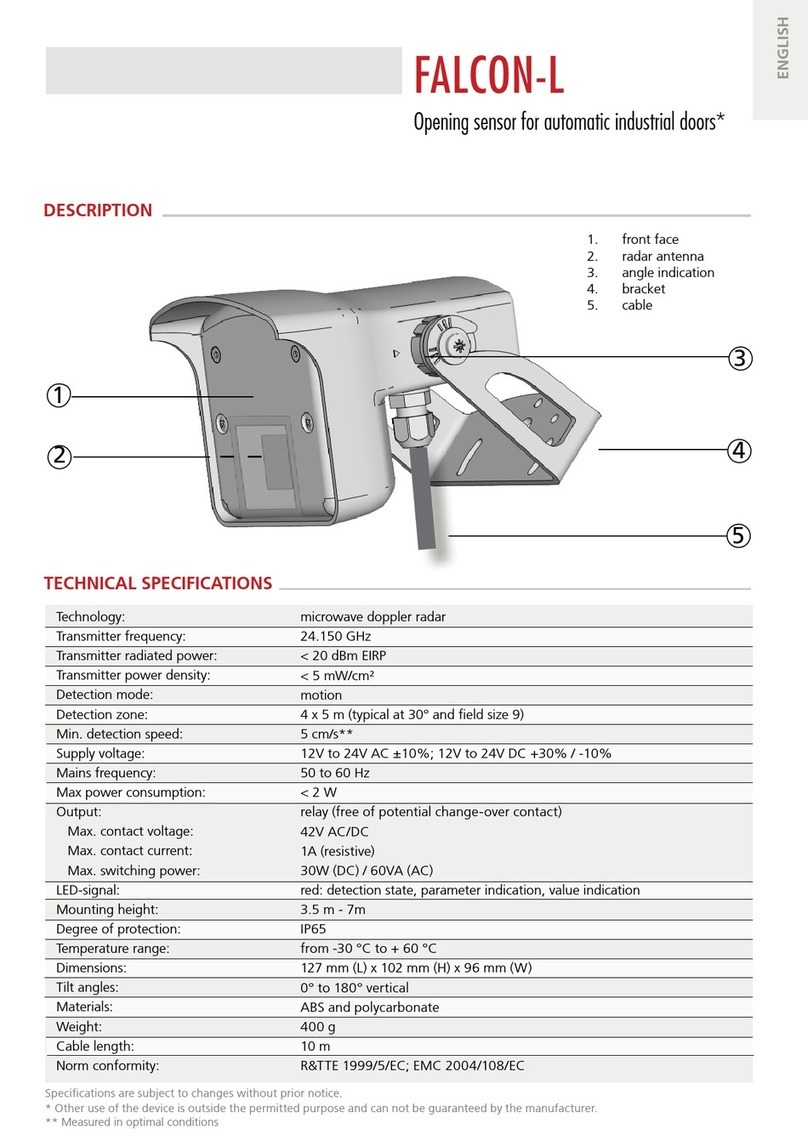
TROUBLE-
SHOOTING –
Cont.
Page 10 of 10
75.0082.05 20080125
COMPANY
CONTACT
PROBLEM PROBABLE CAUSE CORRECTI
E ACTION
1. tion. If Red
2.
x.
ty of these wires must also be s
then
of
the red LED does not start
flashing, voltage on the data wires is
not close or DK-
12 will not inhibit during
closing.
1.
2. oor open
olarity of data
ncorrect
3. Faulty lockout relay
4. Faulty DK-12
Red LED flashes steadily
at a rate of 2 Hz. DK-12 is in detection during set-up. 1.
t-up
nd the Red LED should
DK-12 not reacting to the
remote control are
2. Distance between sensor and
remote is too far.
1. s in the remote control
. Move in closer to the sensor when
n
the Spotfinder, press the Unlock key on the
If the Red LED is illuminated, launch a new
set-up for the door-open posi
LED goes out after Set-Up, walk-test the
pattern and tune if necessary.
If Red LED comes back on when door goes
open after new set-up, the DK-12 may not
be going into the door-open pattern. In the
door open position, there should be appro
12 volts DC on the data wires at the DK-12
terminal block. Without this voltage, the
DK-12 will not go into a door open set-up.
The polari
Door will DK-12 is in detection
DK-12 not recognizing d
position. Voltage or p
wires may be i
correct. Terminal 6 is negative, terminal 7 i
positive.
3. Ensure that lockout devices are powered
and operating normally.
4. Check for proper polarity between lockout
device and operator motor.
5. If no problems are apparent with lockout
device, replace faulty DK-12.
HELPFUL HINT: If the DK-12 will not enter
into a door-open set-up, simply unlock the
sensor with BEA’s remote control, and
force a door open set-up (see bottom
page7). If
incorrect.
If the DK-12 has tried to launch a new set-
up after the expiration of the Automatic
Learn Time due to a permanent change in
the field of detection, and there is continual
movement in the field, the DK-12 will flash
the Red Led indefinitely until movement has
stopped. This may also occur if there is an
object that is extremely close to the DK-12,
thereby causing saturation. Once the object
or movement has been eliminated, clear the
field of detection. The DK-12 should se
within 5 seconds a
1.
go out. Walk-test thereafter to ensure
proper operation.
1. Batteries in the remote control
dead. Replace batterie
2programming.
HELPFUL HINT: Use BEA’s Spotfinder to
test the output of the remote control.
Simply point the remote at the IR Spot o
remote, and red LED should illuminate.
ACCESSORIES
LO-21 Modules Microcell Safety Beams
troubleshooting a problem, please call BEA,
.Never
easensors.com
Weather Hood Unit
PN: 10WHU
Do not leave problems unresolved. If a satisfactory solution cannot be achieved after
Inc. If you must wait for the following workday to call BEA, leave the door inoperable until satisfactory repairs can be made
sacrifice the safe operation of the automatic door or gate for an incomplete solution.
ysThe following numbers can be called 24 hours a day, 7 da a week. For more information, visit www.b .
Sout
Canada: 1-866-836-1863 Midwest: 1-888-308-8843
Northeast: 1-866-836-1863 West: 1-888-419-2564
US and Canada: 1-866-249-7937 heast: 1-800-407-4545

